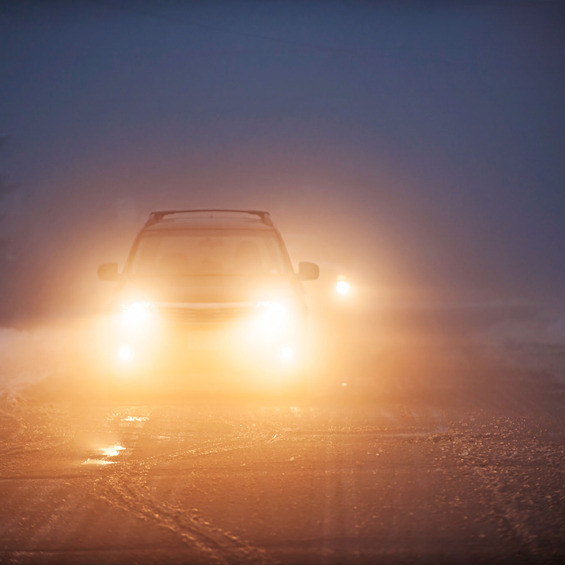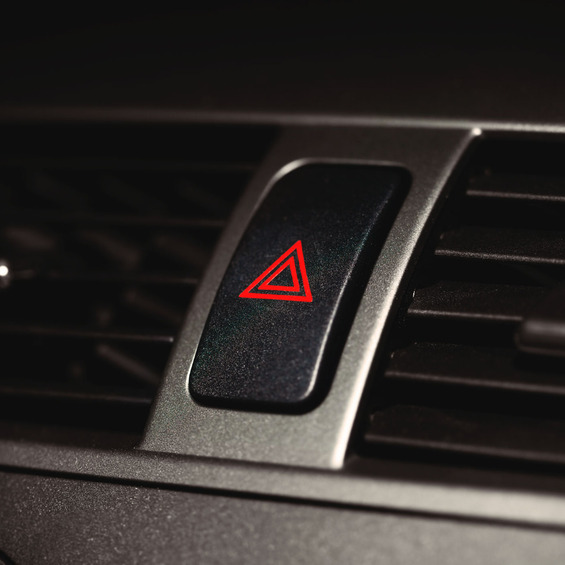
It is no secret that, in addition to the traffic signs and signals prescribed in traffic regulations, the driver must be able to communicate in different road conditions, there is also an informal communication language between drivers, also built on such signs. These rules, unlike SDA, are not taught in driving schools, so everything has to be done while driving. In the meantime, "language" is rather boiled and not all drivers have the perfect knowledge. What are the signs on the road, what do they mean and, above all, how "communication" between drivers affects road safety? The signals that can be given to the phara' s
The signals that can be given to the phara' s
One of the most frequently used signals on the highway is two short blinking lights. Such a signal from the driving towards the vehicle usually warns of the approach to the "ambush" of the traffic police officers. It is possible that in a single case this signal is not intended for a particular driver. But if the situation is repeated several times and blinks several cars in turn, then it is better to slow down so as not to be fined or deprived of rights.
There is a similar signal-a series of switching from the passing beam to the truces that the drivers also use in the opposite connector. This may mean that the headlights of the car facing it are blinded, as they are poorly regulated or the driving beam mode is switched on.

One long "mouth"-driving beam means the requirement to give a road. Most often, drivers receive it "in the back" (sometimes in combination with an angry sound), but there are cases where a motorist understands that he cannot quickly complete the maneuver, and asks the counter car to "move" so that he can get away safely with it.
A single shift from one to another is most often used in urban traffic and means willingness to cede the road. For example, one driver goes off the secondary road to the main road, and the other driver goes out, blinks the headlights, and lets you know what he's missing.
It is very difficult to carry out an overtaking at night while driving on the highway: the driver is not immediately able to determine whether he is ahead of the car or not. In such cases, it is considered a rule of good tone for a brief moment of light when the truck can return to its lane, completing the manoeuvre safely for another vehicle.
Which may mean turning on the blinkers.
The inclusion of the turning points is due not only to the SDA. For example, left-hand direction indicators are often used in the left-hand movement as a request to give way. Sometimes such a signal may be used together with short-term driving.
Another situation: on the track, the car makes overtaking along the oncoming lane, but does not hurry to cross back its lane and blinks with the left turning signal. This driver's actions tell other drivers who are in the back that the "meeting" is free and they can overtake too.

Some truckers also act, helping other drivers to overtake them. Moving on the track in their row, they may turn on the left turning signal, which is a signal that overtaking is dangerous, and the right, respectively-"Observe is safe, skip".
Another variation of the signal, which is sometimes used on the roads, the driver blinks the lights and includes the right indicator. Such a combination-a call to the driver in front of the driver to stop by the side of the road.
What can you say "crashing"?
The alarm signal is also used for "dialogues" between motorists on the road. Perhaps one of the most common ways that has lately become increasingly popular is the gratitude to the other driver.
For example, if a car is allowed to pass a car on the road or gives it a sign that it is possible to carry out an overtaking, at the end of the maneuver, it is desirable to turn the accident on for a couple of seconds and say "Thank you" to the polite driver.

You can thank the city for the accident. In addition, the short term activation of the driver may also be an apology if his or her conduct prevented other movement participants from working. This politeness is usually very much appreciated.
In Europe, by the way, the majority of motorists, instead of including an emergency signal, turn on the right and left blinkers in turn. This is useful to remember on Russian roads when a truck with foreign plates is coming. In addition, this method of gratitude can be used when the emergency light-signalling button is located so that it is difficult to reach it.
Many drivers are involved in the emergency braking intervention. So they warn the people who are going past that there is a danger on the road-it may be a pit, an open hatch, or, say, an animal.
Also, the driver of the driving front may activate the alarm if the headlights of the car behind it are blindled by the rear-view mirrors.
Whether or not to communicate by means of sounds
The interesting thing is that the audible alarm, unlike the light, does not have certain rules and canons. The driver is most often aware of the value of the dial tone. The main thing is not to signal the effect without cause and chaotic, or other traffic participants will simply not be able to "decipher" this "symphony".

It is appropriate to use it to prevent accidents or to indicate intentions on the road. In addition, it is possible to express dissatisfaction with the behaviour of another driver by three short blasts.
In the case of pedestrians, the use of the horn is not always justified, as the sound signal can scare them and provoke unpredictable actions. In this case, it is better to refer to your presence on the road in other ways: "resegregating" or a squeaking of brakes, for example.
Is it possible to break the VSD using light or sound signals to communicate on the road?
There are cases where the traffic officers stop drivers using light or sound signals for "talking" and accuse them of violating the Road Traffic Regulations. This is most often the case where good drivers are warning the DPS to meet the "ambush". In fact, the driver should know that he does not commit any offence. The SDA states that light signals and sound signals can be used by all traffic participants, so that they can be understood by everyone.
There are a lot of signals that drivers use during traffic. It is necessary to know at least the main of them to "find common language" without difficulty with other road users.









